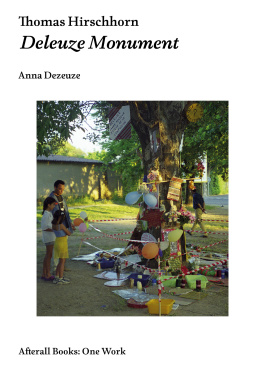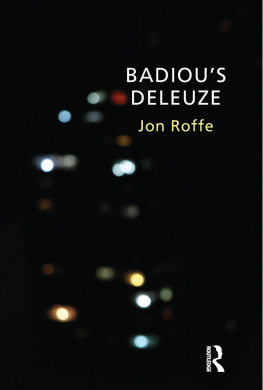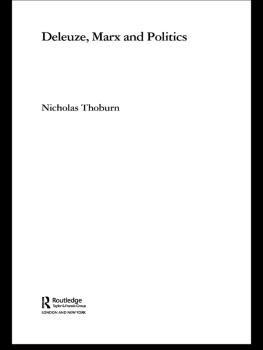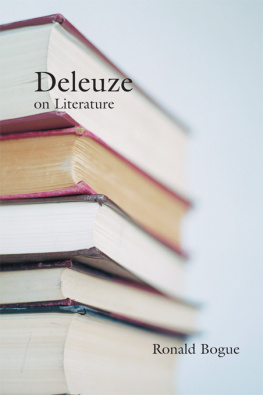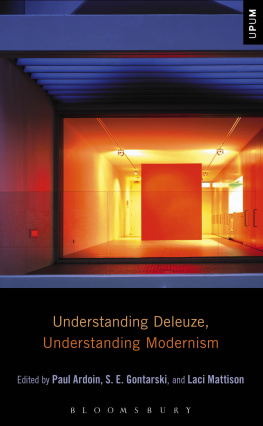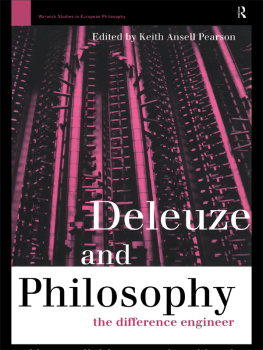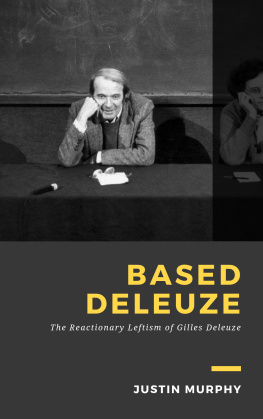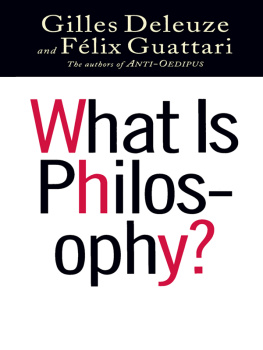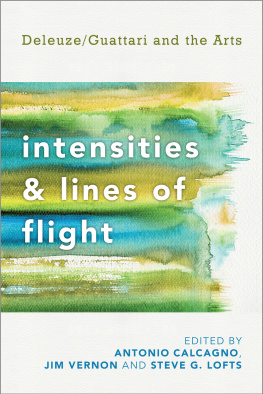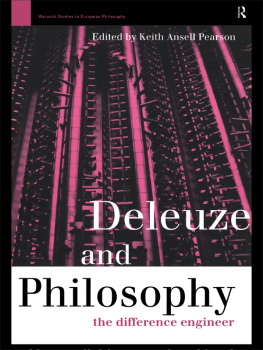Contents
First published in 2014
by Afterall Books
Afterall
Central Saint Martins,
University of the Arts London
Granary Building
1 Granary Square
London N1C 4AA
www.afterall.org
Afterall, Central Saint Martins,
University of the Arts London,
the artists and the authors.
eISBN: 9781846381454
eISBN: 9781846381461
eISBN: 9781846381478
Distribution by The MIT Press,
Cambridge, Massachusetts and London
www.mitpress.mit.edu
cover:
Thomas Hirschhorn,
Deleuze Monument, 2000,
view of the altar,
in La Beaut, Avignon, 2000
All works by Thomas Hirschhorn and courtesy of the artist
All images of Deleuze Monument also courtesy DRAC Provance-Alpes-Cte dAzure, Aix-en-Provance

One Work is a unique series of books published by Afterall, based at Central Saint Martins College of Art and Design in London. Each book presents a single work of art considered in detail by a single author. The focus of the series is on contemporary art and its aim is to provoke debate about significant moments in arts recent development.
Over the course of more than one hundred books, important works will be presented in a meticulous and generous manner by writers who believe passionately in the originality and significance of the works about which they have chosen to write. Each book contains a comprehensive and detailed formal description of the work, followed by a critical mapping of the aesthetic and cultural context in which it was made and has gone on to shape. The changing presentation and reception of the work throughout its existence is also discussed, and each writer stakes a claim on the influence their work has on the making and understanding of other works of art.
The books insist that a single contemporary work of art (in all of its different manifestations), through a unique and radical aesthetic articulation or invention, can affect our understanding of art in general. More than that, these books suggest that a single work of art can literally transform, however modestly, the way we look at and understand the world. In this sense the One Work series, while by no means exhaustive, will eventually become a veritable library of works of art that have made a difference.
My thanks to my family my parents, Daniel and Karen, my sister Laure, as well as Emilie and Franois. My special thanks to Thomas Hirschhorn and his studio for their generous help throughout. The editors would also like to thank Thomas Hirschhorn for generously supporting this book, and Romain Lopez and Sally Boxer for their invaluable help in providing material from the artists studio archive.
Anna Dezeuze is a lecturer in art history and theory at the Ecole Suprieure dArt et de Design Marseille-Mditerrane. She is the editor of The Do-it-yourself Artwork: Participation from Fluxus to New Media (Manchester University Press, 2010) and co-editor, with Julia Kelly, of Found Sculpture and Photography from Surrealism to Contemporary Art (Ashgate, 2012). Her articles have been published in Art Monthly, Art Journal, Mute, Oxford Art Journal, Performance Research and Women & Performance. She co-curated, with David Lomas, the exhibition Subversive Spaces: Surrealism and Contemporary Art (2009), which toured to the Whitworth Art Gallery, Manchester; Compton Verney, Warwickshire; and the Sainsbury Centre, Norwich.
A Missed Encounter
Deleuze Monument, Avignon
Dont bother with that one its been dismantled. Such was the tenor of my cousins advice concerning Thomas Hirschhorns Deleuze Monument (2000, I had only one day available, so I was glad not to have to go to the Cit Champfleury, the public housing project on the edge of the city where the artist had installed his work. It would have involved venturing outside of the citys medieval walls that encircle the pedestrian-friendly zone in which the rest of La Beaut was being presented. I would have had to locate the right bus and then find my way around a quartier sensible, as such neighbourhoods are euphemistically called in France, alluding to their mix of poverty and violence. With little more thought, then, I crossed Deleuze Monument off my to-see list.
Only some years later did this failed encounter with Deleuze Monument take on new significance for me. Upon beginning a research project about art practices that teeter on the verge of disappearance precarious practices in the sense that they are liable to fail; exposed to risk, hazardous; insecure, unstable, to quote the Oxford English Dictionary
Thus I have imagined trying to find my way, in that summer of 2000, among the buildings of the Cit Champfleury in search of Deleuze Monument. Since there was little or no signage (as some visitors complained), I would have very likely felt a little lost. Maybe I would have asked for directions, or wandered until I caught a glimpse, from a distance, of a bright blue sculpture, a large rectangular cabin and a tree standing out among others, surrounded by colourful objects ( Far from a didactic explanation of either Deleuze Monument or Deleuzes thinking, this rather cryptic fragment would certainly have raised more questions than it answered. What are these fictions? Who is responsible for these reactive forces? And what could active thinking be?
Nearby, I would have stumbled upon an untidy sprawl, reminiscent of the kind of shrines that are improvised in the street after a tragic accident, and seen brightly coloured objects and cardboard signs strung with striped red-and-white barrier tape from the branches of a tree or scattered around its trunk (). Photocopied photographs of Deleuze; teddy bears; yellow, blue and orange balloons; flowers wrapped in plastic; and candles placed in coloured plastic basins all mingled with a profusion of messages dedicated to the philosopher. Hanging from the tree, a green heart-shaped sign bore photocopies of a text about Deleuze, which were surrounded by cut-out yellow hearts and the handwritten words Je taime and Tu me manques tellement (I miss you so much). Placed on the ground, another piece of cardboard bore the words Tu es vraiment le plus fort (You really are the best), while a cushion-like object covered in yellow plastic proclaimed in bold black capitals: Deleuze soleil de ma vie (Deleuze, sunshine of my life).
Other signs elsewhere in this altar to Deleuze would have invited me to read the philosophers work and ponder his legacy for example, Qui aprs Deleuze? (After Deleuze, who?). Along with quotations from his writings, the shrine included photocopies from his books as well as sentences summarising his ideas, all providing insight into what Hirschhorn ostensibly admires in the authors philosophy. When Hirschhorn declared, in another sign, that Deleuze a anim le fossile (Deleuze has brought the fossil to life, ), he seemed to be referring to the philosophers discussion, in his 1983 book LImage-mouvement: Cinma 1: (Cinema 1: The Movement-Image), of cinematic images as radioactive fossils that radiate meaning beyond their apparently inert state. Hirschhorn was similarly trying to animate the radioactive fossils of Deleuzes thought. Wavy squiggles surrounding this quotation, like the radiating wave-like lines in other signs in the altar, communicated, comic book-style, a sense of movement and energy.
Next page
